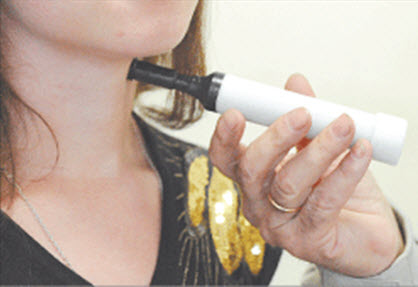Medical detectors
Recognition of malignant diseases using nuclear medicine occupies the leading place among the variety of tasks in nuclear medicine. Radionuclide or radioisotope diagnosis is a section of beam diagnostics for detecting pathological changes in human organs and tissues using radiopharmaceuticals whose can integrate in physiological processes in the body.

Diagnostic equipment used in nuclear medicine consist of a detector, unit for analyzing and converting and memory. A particular type of such devices are compact gamma locators, or gamma probes (gamma-probe), designed to identify areas of local accumulation of the radiopharmaceutical in the body.
Main areas for using of gamma-locator are intraoperative search of sentinel lymph nodes and non-invasive scan of the patient to identify superficial malignancies.
A prototype of gamma locator consists of detecting portion and the electronics was designed and developed in MEPhI. Sensitive part of the detector is made of scintillation crystal LaBr3:Ce (cylinder 5x10 mm3) and SiPM photodetector Hamamatsu (3x3 mm2). Electronic components are placed on the multilayer printed board fixed inside the cylindrical plastic shell.
The prototype gamma locator was tested on laboratory rat, infected by radiopharmaceutical " Tehnefor » (99mTc-EDTMP). This medication accumulates mainly in the bones of the skeleton and about 40 % of the administered dose is excreted by the kidneys. According to the results obtained about three hours after injection, radiopharmaceutical was predominantly detected in the rat bladder (size about ~ 1 cm). This study allowed to test the device in conditions close to real areas of application.
The prototype gamma locator does not concede to foreign analogues. It is worth noting its spatial resolution and selectivity among the other advantages. Also portability and the ability to control the device with a small PC are of particular importance in operating conditions.
Contact Person:
Kantserov Vadim


